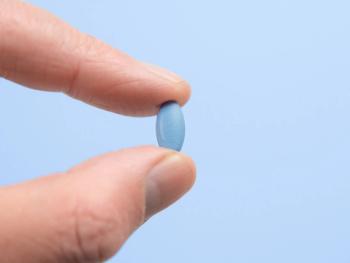
Can This Cancer Treatment Cause Manic Episodes?
A case report and literature review of intrathecal methotrexate-induced mania.
CASE REPORT
A manic episode is a psychiatric condition characterized by the presence of elevated, expansive, or irritable mood; grandiosity; increased goal-directed activity; risk-taking behaviors; pressured speech; decreased need for sleep; racing thoughts; and distractibility. Most commonly, manic episodes occur because of an underlying primary bipolar disorder. However, manic episodes can occur as a result of multiple other causes, including general medical conditions, substance abuse, and medication side effects. One medication that has been hypothesized to precipitate manic episodes is the chemotherapy agent methotrexate.
Methotrexate is used in the treatment of multiple forms of
This case report demonstrates the acute onset of mania in a patient with no history of
Presentation
“Charlie” is an adolescent patient with a prior psychiatric history of attention-deficit/hyperactivity disorder (ADHD) and a medical history of acute lymphocytic leukemia (ALL). He had no prior history of affective or psychotic disorders. Family history was significant for depression in a maternal aunt, but there was no family history of bipolar disorder or psychosis. After the patient was diagnosed with high-risk ALL, he was started on induction chemotherapy. He completed a course of prednisone treatment and received a second dose of intrathecal methotrexate (IT MTX) a few days prior to presentation.
At that time, Charlie presented to the hospital with several days history of altered mental status in the form of irritability, elevated mood, poor sleep, pressured speech, grandiosity,
Upon admission, computed tomography (CT) head without contrast, magnetic resonance imaging (MRI) brain with and without contrast, magnetic resonance angiography (MRA) head without contrast, and magnetic resonance venography (MRV) head with and without contrast were all unremarkable. Awake electroencephalogram (EEG) was normal. Labs including anti- hyroperoxidase (TPO), thyroid peroxidase antibody, paraneoplastic antibody panel, autoimmune encephalopathy panel, and N-methyl-D-aspartate (NMDA) receptor antibody (CSF and serum) were negative. Ammonia, ceruloplasmin, Vitamin B12, TSH, and T4 were normal.
After being evaluated by the psychiatric consult liaison (C-L) team, Charlie was started on olanzapine, which was titrated to 10 mg BID for treatment of acute manic and psychotic symptoms. During the following days, Charlie remained disorganized and delusional, so olanzapine was changed to haloperidol 1 mg BID. The next few days he was reported to be doing marginally better, with improved
On day 9 of admission, Charlie received third IT MTX treatment. On the following day, he was very restless, making bizarre hand movements, pacing around the room, with pressured speech and tangential thoughts, and remained hyper-religious with delusions of grandeur. Following reassessment by the C-L team, he was started on sodium valproate and quetiapine in addition to haloperidol 1 mg BID. Total daily doses of sodium valproate and quetiapine were gradually titrated up to 1250 mg and 350 mg, respectively. Charlie could not tolerate further increases in quetiapine beyond 350 mg daily due to excessive sedation, and haloperidol was discontinued due to prolonged QTc. Lorazepam 1 mg TID was added for management of agitation and irritability.
During the following days, Charlie’s sleep started to improve with periods of lucid thoughts. He gradually became much calmer and redirectable, although remained occasionally delusional. As his mental status started to improve, quetiapine was decreased to 300 mg daily and lorazepam was decreased to 0.5 mg in the evening. Sodium valproate was continued at 1250 mg daily.
On day 16, Charlie received a fourth scheduled IT MTX treatment, with deterioration of mental status by the following day. He was noted to have more disorganized speech and delusional thoughts. Quetiapine was gradually titrated to 700 mg daily while sodium valproate was kept at 1250 mg daily.
Charlie showed marked improvement in mental status over the next few days of treatment, with less pressured speech and less disorganization. He continued to have tangential and racing thoughts but with much less intensity. Following stabilization, Charlie was discharged to home on a medication regimen that consisted of sodium valproate 1250 mg daily, quetiapine 700 mg daily, and lorazepam 0.5 mg TID.
After discharge, Charlie was followed by the psychiatric C-L team during outpatient visits to the Hem/Onc clinic. Five days after discharge, his thought process and behavior were noted to be much more organized. He continued to have some delusional thinking but was able to interact and engage in daily activities. Due to complaints of tiredness and increased sleep during the daytime, quetiapine was decreased to 500 mg daily and lorazepam was discontinued. Sodium valproate was continued at 1250 mg daily.
Twelve days following discharge, Charlie received fifth and last IT MTX treatment as scheduled. Six days after that, he was readmitted with acute manic and psychotic symptoms similar to the first admission. Following evaluation by psychiatry, Charlie was continued on sodium valproate 1250 mg daily, and quetiapine was increased to 600 mg daily. Due to elevated valproic acid (113.4 ug/mL, ref range 50-100 mcg/mL) and ammonia (97 umol/ L, ref range 11-32 umol/ L) levels, sodium valproate was subsequently decreased to 750 mg daily. During the following days, his behavior and mental status started to improve. After 6 days of hospitalization, the patient was discharged home on quetiapine 600 mg daily and sodium valproate 750 mg daily.
Seven days later, the patient presented at the outpatient clinic with markedly improved mental status and overall functioning. Sodium valproate 750 mg daily and quetiapine 500 mg daily were continued.
Given that Charlie presented with 4 episodes of severe manic symptoms with psychotic features after administration of intrathecal MTX, a causal association was assumed between the intrathecal MTX and development of these symptoms. After significant discussions between psychiatry and hem/onc, the decision was made to switch ALL treatment from IT MTX to intrathecal cytarabine/hydrocortisone (IT ARAC/HCZ) with oral MTX.
As a result, Charlie continued to present psychiatrically stable with no acute affective or
It is worth noting that Charlie received steroids in addition to IT MTX before the onset of first manic episode. No steroids, however, were given in combination with IT MTX prior to subsequent episodes. When treatment was switched to intrathecal steroid (IT ARAC/HCZ) with oral methotrexate, he remained psychiatrically stable with no further manic episodes reported.
Discussion
In children with acute lymphoblastic leukemia, the addition of methotrexate to treatment protocols has been found to be beneficial in preventing central nervous system relapse.3 Methotrexate is a folate antagonist that is used for treating a variety of medical conditions including psoriasis, rheumatoid arthritis, and other
Methotrexate inhibits dihydrofolate reductase (DHFR), the enzyme that reduces folic acid to tetrahydrofolic acid.4 The inhibition of DHFR by folate antagonists (methotrexate) results in a deficiency in the cellular pools of thymidylate and purines, and thus a decrease in nucleic acid synthesis. Therefore, methotrexate interferes with DNA synthesis, repair, and cellular replication. It also markedly interferes with transmethylation reactions, which are crucial for the formation of proteins, lipids, and also myelin, presumably leading to demyelination of nervous tissues.
Few mechanisms of precipitation of manic symptoms by methotrexate have been hypothesized. One possible cause is the interference of folate metabolism, as folic acid is used in the body to manufacture serotonin and dopamine neurotransmitters. Other postulations include interference in glutaminergic neurotransmission (increased release in glutamate and aspartate) by high levels of homocysteine and sulfur-containing amino acids, which is caused by the interference in folate metabolism.5 Glutaminergic neurotransmission is implicated in the pathophysiology of bipolar affective disorder and some studies report patients with manic episodes show elevated glutamate and glutamine.6-9
Cytotoxic agents including methotrexate are potent neurotoxins. Although neurotoxicity has been observed with high dose oral or intrathecal methotrexate, to date there have been no published reports in the literature in which methotrexate precipitated a
There are multiple drugs that are implicated in the development of manic symptoms, including antidepressants, steroids, levodopa, amphetamine, and phencyclidine, but methotrexate is not commonly implicated.10 In Charlie’s case, the contingency of the symptoms on methotrexate use and improvement on withdrawal of the drug and treatment of the manic episode suggest a causal relationship.
ADHD has been genetically linked to bipolar disorder,11 and that may offer an explanation, at least in theory, about why this particular patient was more vulnerable to developing manic episodes.
In cases where mania is thought to be precipitated by IT MTX, we would recommend using an alternative medication or route of administration in addition to the use of psychotropic medications to manage the acute manic symptoms as appropriate.
To our knowledge, this is the first case report of acute onset mania in a patient with no prior personal or family history of bipolar disorder during IT MTX. It adds to the limited literature of methotrexate-induced mania in patients with previously stable bipolar disorder. Collectively, these reports contribute to the poorly understood relationship between bipolar disorder and treatment with cytotoxic agents, such as methotrexate.
Dr Montaser is a child and adolescent psychiatrist, as well as an adjunct clinical assistant professor of psychiatry at Indiana University School of Medicine. Dr Holton is an assistant professor at Emory University School of Medicine and is the Program Director for Emory’s Child and Adolescent Psychiatry Fellowship Program. Dr Bora is the medical director for the psychiatry consultation-liaison service for Children’s Healthcare of Atlanta and adjunct assistant professor at Emory University School of Medicine. Dr Cheek is an assistant professor at Emory University School of Medicine.
References
1. Bedford Laboratories. Methotrexate for injection prescribing information. 2012.
2. Hariram J, Jegan Y. Contribution of methotrexate in precipitation of manic episode in bipolar affective disorder explored: a case report. Ther Adv Psychopharmacol. 2013;3(4):251-254.
3. Bührer C, Henze G, Hofmann J, et al. Central nervous system relapse prevention in 1165 standard-risk children with acute lymphoblastic leukemia in five BFM trials. Haematol Blood Transfus. 1990;33:500-503.
4. Raimondi MV, Randazzo O, La Franca M, et al. DHFR inhibitors: reading the past for discovering novel anticancer agents. Molecules. 2019;24(6):1140.
5. Vezmar S, Becker A, Bode U, Jaehde U. Biochemical and clinical aspects of methotrexate neurotoxicity. Chemotherapy. 2003;49(1-2):92-104.
6. Sanacora G, Rothman DL, Mason G, Krystal JH. Clinical studies implementing glutamate neurotransmission in mood disorders. Ann NY Acad Sci. 2003;1003:292-308.
7. Michael N, Erfurth A, Ohrmann P, et al. Acute mania is accompanied by elevated glutamate/glutamine levels within the left dorsolateral prefrontal cortex. Psychopharmacology (Berl). 2003;168(3):344-346.
8. Ongür D, Jensen JE, Prescot AP, et al. Abnormal glutamatergic neurotransmission and neuronal-glial interactions in acute mania. Biol Psychiatry. 2008;64(8):718-26.
9. Gigante AD, Bond DJ, Lafer B, et al. Brain glutamate levels measured by magnetic resonance spectroscopy in patients with bipolar disorder: a meta-analysis. Bipolar Disord. 2012;14(5):478-87.
10. Preda A, Shapiro B, Bienenfeld D. Substance-induced mood disorder. Medscape. July 21, 2020.
11. Osser DN. ADHD in patients with bipolar disorder: genetics, diagnosis, and treatment. Psychiatric Times. 2021;38(1).
Newsletter
Receive trusted psychiatric news, expert analysis, and clinical insights — subscribe today to support your practice and your patients.














